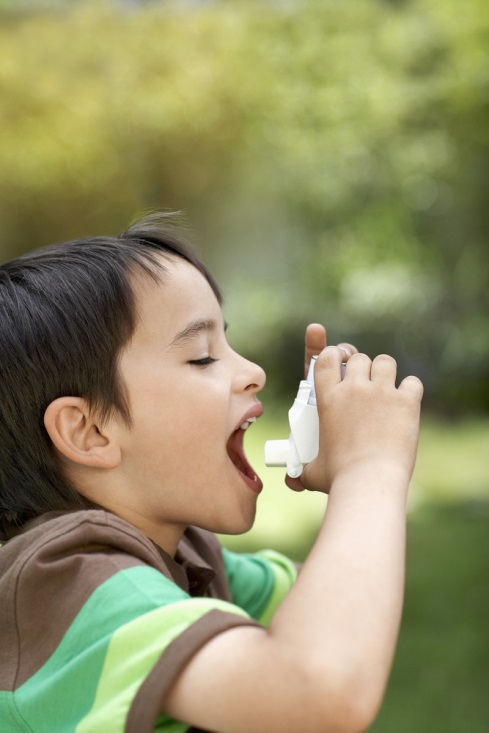When you have a young child with asthma, taking steps to control symptoms can help your child avoid medical emergencies and lead a healthier, happier life. As your child grows older, you need to teach him or her how to starting managing his or her own asthma.
You can begin by developing and implementing, under your pediatrician’s guidance, an asthma control plan that includes removing environmental asthma triggers and using medication. Educate your children about asthma, its symptoms and its triggers in order to teach them about asthma control. Your children may benefit from special interactive games and other activities designed to help kids learn about controlling their own asthma symptoms.
Understand Asthma Triggers
Asthma symptoms in children can include coughing and wheezing, difficulty breathing, tightness in the chest and recurrent bouts of bronchitis. While older children may be able to tell you about their symptoms, younger children may simply seem short of breath or disinclined to activity. Asthma attacks can become severe enough to require emergency medical intervention.
Asthma symptoms can be triggered by environmental factors like:
- Pollen, dust mites, pet dander or other allergens
- Cold weather
- Physical activity
- Irritants in the air, like cigarette smoke or nitrogen dioxide
- Gastroesophageal reflux disease (GERD)
- Respiratory infections and colds
Pay attention to your child’s asthma triggers. Identifying and, if possible, eliminating them will be an important part of your child’s asthma control plan.
Make an Asthma Control Plan
As soon as your child has been diagnosed with asthma, begin working on an asthma control plan. You should learn to identify the physical warning signs that your child’s asthma symptoms are getting out of control. Though the specific signs may be different from one child to the next, they can include:
- Coughing at night
- Restlessness
- Cold or flu
- Pale complexion
- Dark under-eye circles
- Runny or stuffy nose
- Tightness in the chest
- Tickle in the back of the throat
- Watery eyes
- Sneezing
- Feelings of fatigue or weakness
- Headache
Write down these warnings signs so that you can easily recognize them when they appear in your child later. Use a peak flow meter to measure your child’s lung function when symptoms begin to appear.
If your child was exposed to one of the asthma triggers discussed above before symptoms began, write those down too. You can control many of your child’s asthma symptoms by removing triggers from the environment. If a furry pet appears to be triggering your child’s asthma attacks, find Fluffy another home. If cigarette smoke is irritating your child, stop smoking or, if you can’t, stop smoking in your home or car. If you use a fuel burning appliance, such as a wood stove, a kerosene heater or a gas cook stove, make sure that appliance is vented to the outside when in use.
When your child does get asthma symptoms, there are many effective medications available for the treatment of asthma. Some of these medications are inhaled through a nebulizer or in dry powder form. A rescue inhaler can be used in an emergency to relieve symptoms that occur in spite of other treatment. If your child has allergy-related asthma, immunotherapy may help him or her develop a tolerance to the allergen, if it cannot be removed from your environment. Seek emergency medical care if your child develops any of the following symptoms:
- Wheezing or coughing that doesn’t stop
- Significant breathing problems
- Continuing severe symptoms even after using a rescue inhaler
- Leaning forward to breathe
- Trouble speaking
- Gasping
- Inhaling hard enough to pull the abdomen up under the ribcage
- Red zone readings on the peak flow meter
Teach Your Child About Asthma Control
There will come a day when you won’t be there to identify asthma warning signs and help your child control his or her asthma symptoms, and when that day comes, you want your child to be prepared to care for his or her own symptoms. Talk to your child regularly about his or her asthma warning signs and what to do if he or she starts feeling unwell. Enroll your child in an asthma camp to reinforce the lessons you teach him or her at home. New interactive games, like the recently launched Wellapets from LifeGuard Games, can make learning to control asthma symptoms fun.
Asthma symptoms can be life-threatening if they aren’t properly controlled. By learning to identify your child’s asthma triggers and attack warning signs, you can directly improve his or her health. Teach your child how to take charge of his or her own symptoms, so that as your child grows older, he or she can take a more active role in managing his or her asthma symptoms.












